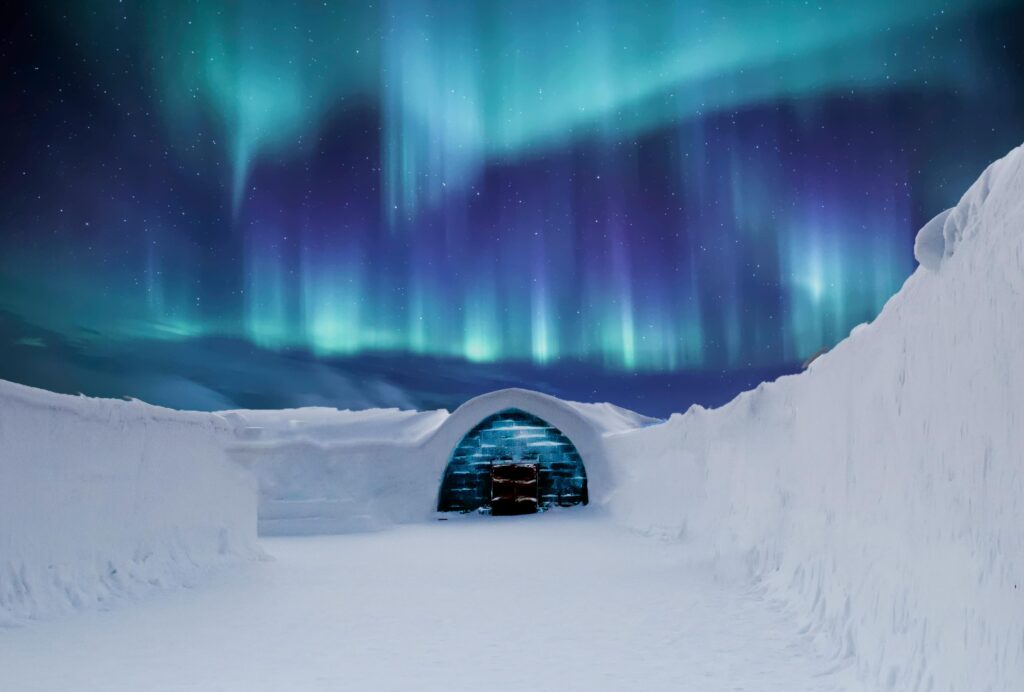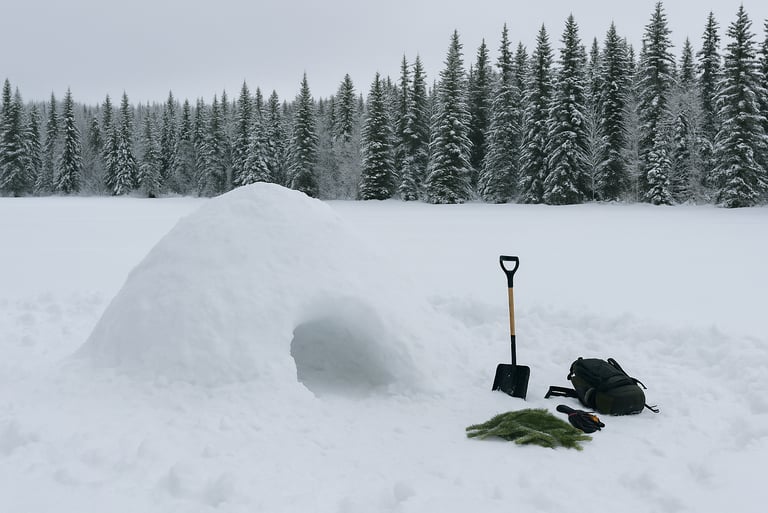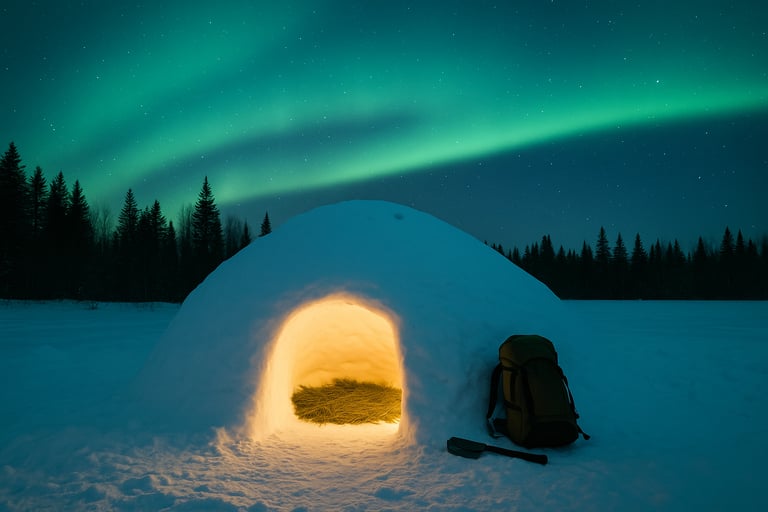How to Build a Quinzhee Shelter: Insulated Survival Shelter for Deep Snow Conditions
Learn how to build a quinzhee shelter for cold-weather survival. This guide walks you through every step, from piling snow to hollowing out the interior, for a warm and safe emergency shelter in winter.


How to Build a Quinzhee Shelter: Insulated Survival Shelter for Deep Snow Conditions
If you’re caught in a snowy wilderness without a tent, building a quinzhee shelter can provide life-saving warmth and protection. While it takes more time and energy than other shelters like a snow cave, it’s an incredibly effective way to create a sturdy, insulated home using nothing but snow and basic tools.
Unlike a snow cave — which is dug into an existing snowbank — a quinzhee is made by piling snow into a mound and letting it settle before hollowing out the interior. This creates a durable shell that retains heat and stands up well to harsh winter conditions.
Let’s walk through exactly how to build one, with safety and simplicity in mind.
What Is a Quinzhee Shelter?
A quinzhee is a dome-shaped snow shelter created by mounding snow and hollowing out the inside after it settles. It works by using the insulating properties of snow to trap body heat while blocking wind and freezing air.
Quinzhees are ideal when the snow isn’t deep enough for a snow cave but still packable. They’re also safer to build than caves in loose or unstable snow conditions because you're constructing the mound yourself, controlling the structure from the ground up. If snowbanks are available and compacted, you might also consider building a snow cave shelter, which requires less snow piling and no wait time.
Finding the Right Spot
Choose a flat, open area that’s free of trees, rocks, or logs. You’ll need plenty of space to pile up a large dome of snow, ideally about 6 to 8 feet tall and 10 to 12 feet wide. Avoid any spot that’s exposed to high wind, but make sure you’re not in a low-lying area that could collect cold air. If you’re near evergreen trees, you might also consider making a tree pit shelter, which offers quick protection using natural snow wells.
Packable snow is ideal. If the snow is too powdery, mix in some layers of firmer snow or stomp it down with your feet as you build the mound. This helps it bond and settle more evenly.
Building the Snow Mound
Start by piling snow into a rounded dome. This can take time; use a shovel, tarp, or even your hands if necessary. Once the mound reaches full height, stomp it down gently all over to pack it tightly. Let it settle for at least 1 to 2 hours. This waiting period is critical because it allows the snow crystals to bond together, forming a solid structure.
To help gauge wall thickness when carving, you can insert 12 to 18 inch sticks around the outside of the mound before hollowing it out. These sticks will act as guides so you don’t dig too close to the outer edge.
Hollowing Out the Interior
Once the snow has settled, start carving out the inside from a small entrance at the base. Dig upward and inward so the sleeping chamber ends up slightly above the entrance. This helps trap warm air and prevent heat from escaping.
As you dig, smooth the walls and ceiling into a dome shape. The ceiling should curve down at the sides to prevent melting and dripping. Stop digging when you reach the base of the guide sticks, ensuring the walls stay thick and strong. To improve interior comfort, consider building a bough bed shelter inside the quinzhee to insulate your body from the cold snow floor.
Create a small ventilation hole in the top with a stick or ski pole to allow fresh air circulation, and check it regularly to make sure it stays open.
Insulating and Staying Safe
Line the floor with pine boughs, foam pads, or dry clothing to keep your body off the cold snow. A backpack or snow block can be used to partially seal the entrance at night, but always leave space for airflow.
Never light a fire inside a quinzhee. Even small heat sources like candles can weaken the structure. Rely on insulation and body heat to stay warm.
Final Thoughts on Quinzhee Shelters
While it takes effort to build, a quinzhee shelter is one of the most reliable survival shelters for deep snow environments. Its insulated design and solid structure make it ideal for emergencies or extended winter camping.
Whether you’re lost in the backcountry or just testing your skills in the snow, knowing how to build a quinzhee gives you the confidence to face winter head-on — and stay warm doing it.




© 2025. All rights reserved About | Privacy Policy | Terms and Conditions | Affiliate Disclosure | Disclaimer


